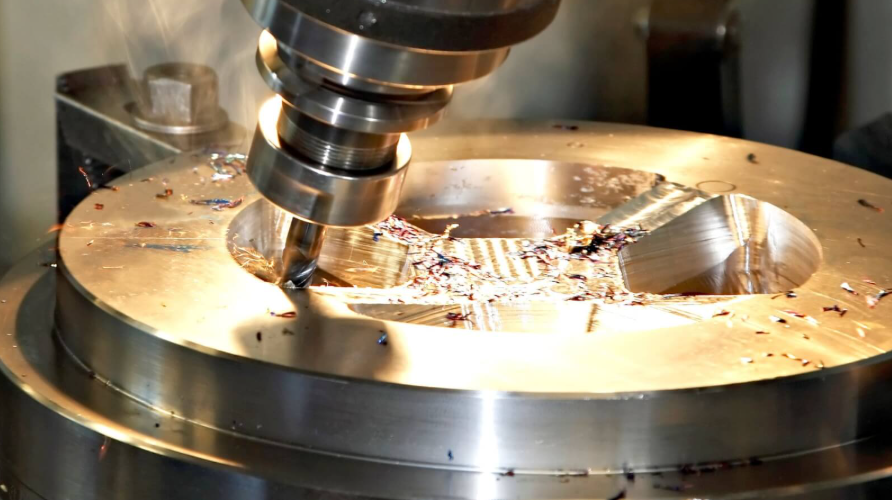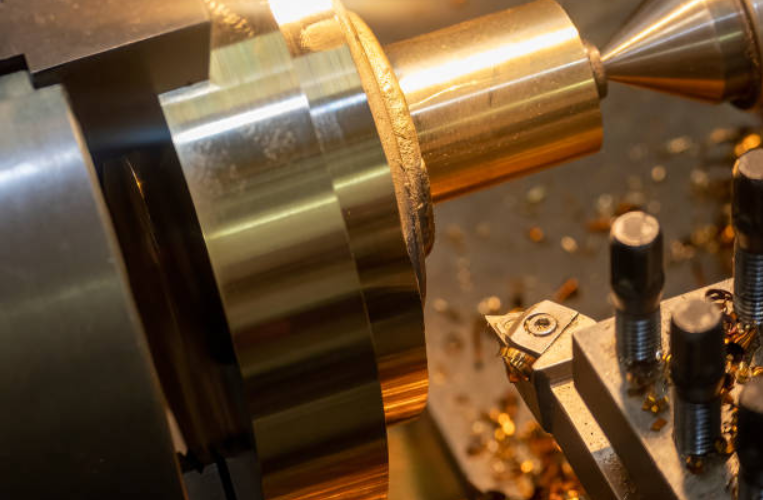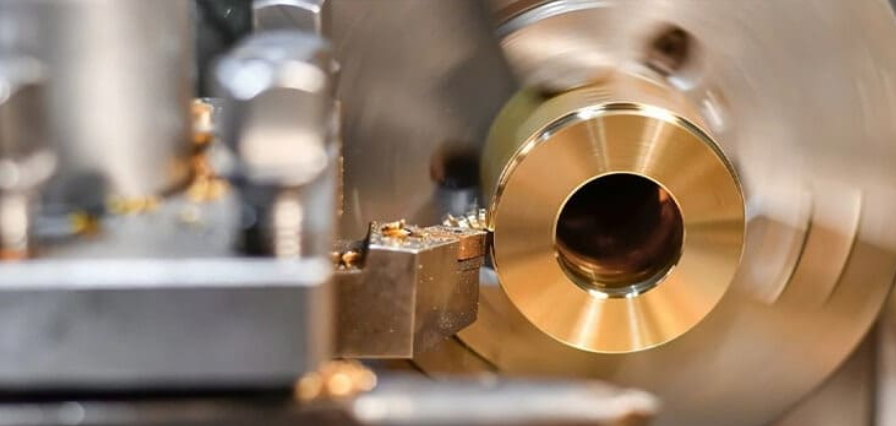The machining of bronze alloys presents unique technical challenges that require specialized CNC strategies to achieve the tight tolerances and surface finishes demanded by critical applications. Bronze’s combination of softness, ductility, and abrasive particles in its microstructure creates distinct machining characteristics that differ fundamentally from ferrous materials or aluminum. Industrial CNC programmers working with bronze components must account for the material’s tendency to generate long, stringy chips (particularly in leaded bronzes like C93200) while simultaneously managing the abrasive wear caused by hard intermetallic phases in aluminum bronzes (C95400). Modern toolpath strategies have evolved to address these challenges, with trochoidal milling patterns proving particularly effective – reducing tool engagement to 30-40% of cutter diameter while maintaining 0.003-0.005″ chip loads at 250-350 SFM surface speeds for aluminum bronze components.
 Tool selection and geometry play pivotal roles in successful bronze machining operations. For roughing operations, micrograin carbide end mills with polished flutes and variable helix angles (35-45°) demonstrate 300% longer tool life compared to standard geometries when machining nickel-aluminum bronze (C95800). The polished flute surfaces prevent material adhesion, while the variable helix disrupts harmonic vibrations that can lead to poor surface finishes in gummy materials. For finishing passes, diamond-coated tools operating at 500-800 SFM achieve mirror-like surface finishes (8-16 μin Ra) on bearing surfaces, with the ultra-hard coating resisting the abrasive silicon particles present in many bronze alloys. Coolant delivery becomes critical – through-tool systems operating at 500-1000 psi effectively break up the characteristic long chips while preventing work hardening in phosphor bronze components (C51000-C54400).
Tool selection and geometry play pivotal roles in successful bronze machining operations. For roughing operations, micrograin carbide end mills with polished flutes and variable helix angles (35-45°) demonstrate 300% longer tool life compared to standard geometries when machining nickel-aluminum bronze (C95800). The polished flute surfaces prevent material adhesion, while the variable helix disrupts harmonic vibrations that can lead to poor surface finishes in gummy materials. For finishing passes, diamond-coated tools operating at 500-800 SFM achieve mirror-like surface finishes (8-16 μin Ra) on bearing surfaces, with the ultra-hard coating resisting the abrasive silicon particles present in many bronze alloys. Coolant delivery becomes critical – through-tool systems operating at 500-1000 psi effectively break up the characteristic long chips while preventing work hardening in phosphor bronze components (C51000-C54400).

Precision bronze machining for aerospace and marine applications requires exceptional process control. Naval propeller shaft bearings machined from C95500 nickel-aluminum bronze demand bore tolerances of ±0.0005″ over lengths exceeding 36 inches – achieved through thermally stabilized CNC lathes equipped with hydrostatic guideways and real-time diameter compensation systems. The medical device industry pushes requirements further, with CNC-machined bronze surgical instrument components requiring 0.0002″ positional accuracy and surface finishes below 4 μin Ra. These tolerances are maintained through adaptive control systems that monitor cutting forces and automatically adjust feeds/speeds when machining variations in bronze castings’ hardness (typically varying by 10-15 BHN within a single workpiece).
Recent advancements in machine tool technology have specifically targeted bronze machining challenges. High-frequency spindles (40,000+ RPM) with active vibration damping now enable micromachining of intricate bronze electrical contacts with 0.0003″ feature accuracy. The development of hybrid machining centers combining milling and EDM capabilities allows for efficient production of complex bronze molds with deep, narrow cavities that would be impossible to machine conventionally. On the software side, AI-powered CAM systems analyze historical machining data to optimize feed rates dynamically, reducing cycle times by 15-20% while extending tool life in high-volume bronze component production.

Quality assurance in bronze machining employs specialized metrology approaches. The material’s low thermal conductivity (approximately 50 W/m·K) necessitates temperature-controlled inspection environments for critical components, with coordinate measuring machines (CMMs) maintained at 20±0.5°C to ensure measurement accuracy. For high-wear applications like bronze worm gears, non-contact surface profilometers measure and document surface texture parameters (Rpk, Rk, Rvk) that predict component longevity in service. The most demanding applications, such as bronze components for nuclear service, require eddy current testing after machining to detect subsurface tooling marks that could initiate stress corrosion cracking.
Emerging applications continue to push the boundaries of bronze machining technology. The renewable energy sector’s growing demand for large bronze bushing components (up to 72″ diameter for wind turbine applications) has driven the development of custom CNC boring mills with laser-guided alignment systems. The electric vehicle revolution has created new requirements for precision-machined bronze induction motor components, where CNC turning centers achieve 0.4μm Ra surface finishes on commutator segments using single-crystal diamond tools. As additive manufacturing gains adoption for complex bronze parts, CNC machining remains essential for achieving final dimensional accuracy and surface quality – hybrid manufacturing cells now combine 3D printing with precision CNC machining in a single workflow for bronze impellers and other complex geometries.

The future of bronze CNC machining lies in smarter, more connected systems. IoT-enabled machine tools now collect and analyze terabytes of operational data from bronze machining processes, identifying optimal parameter combinations for specific alloy batches. Digital twin technology simulates and optimizes bronze machining operations before physical cutting begins, reducing scrap rates in high-value components. These advancements ensure that bronze – one of humanity’s oldest engineered materials – continues to meet the precision requirements of modern industrial applications through cutting-edge CNC machining solutions.




